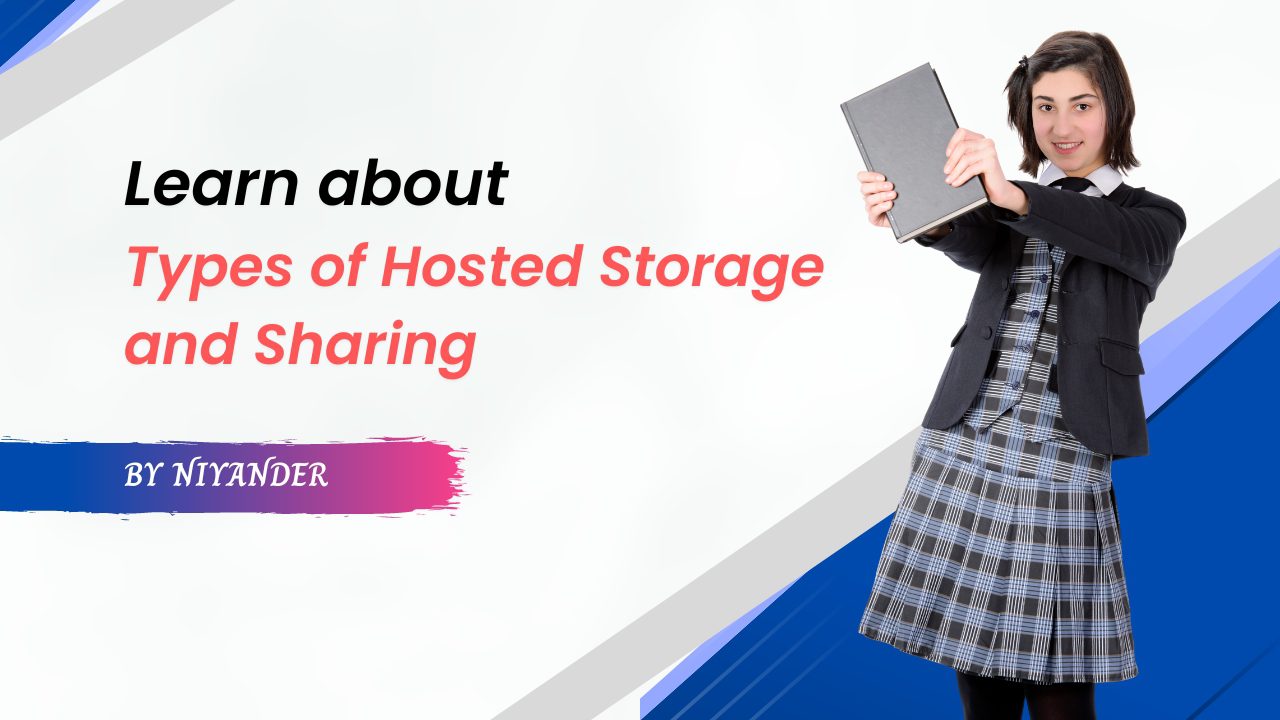Types of Hosted Storage and Sharing
Welcome to “Types of Hosted Storage and Sharing.” After reading this article, you will be able to:
Also visit: Troubleshooting Storage Issues
- Explain how Storage as a Service works.
- Describe what a repository is and how it’s used. And list the benefits of Active Directory.
Storage as a Service (or STaaS) is when companies sell network storage space to customers. This saves their customers from having to purchase and maintain network equipment. Dropbox, OneDrive, Google Drive, Box, and Amazon Drive are all examples of Storage as a Service.
Most email today is stored in the cloud. Companies store your data, emails, and attachments in their data centers. The same is true for social media storage. Companies store your photos, videos, and messages in their data centers. Security and data retention policies vary.
- Gmail will recover deleted email for 30 days before permanent removal.
- Facebook deletes after 90 days but keeps certain user data indefinitely.
workgroup or homegroup
A workgroup or homegroup is a group of computers on a SOHO network, typically without a server. To share files and folders, users set them to ‘public’ Data is stored on the user device that created it. The added points of failure create higher risk of data loss. Newer Cloud solutions provide the same features more securely.
Workgroups and homegroups are less common. Homegroups have been removed from Windows 10 altogether.
Repository
- A repository is a network location that lets users store, manage, track, collaborate on, and control changes to their code.
- Repositories save every draft and users can roll things back if problems occur. This can save software developers months of time.
- Examples of repositories include: GitHub and Docker Hub.
Active Directory
Active Directory is a Microsoft technology that manages domain elements such as users and computers. It organizes domain structure, grants network access, and connects to external domains. It can be managed remotely from multiple locations.
- Active Directory Domain Services (or AD DS) are the core services behind Active Directory.
- AD DS: Stores centralized data, and manages communication and search.
- Authenticates users so they can access encrypted content.
- Manages single sign on user authentication. And limits content access via encryption.
Network drives
Network drives are installed on a network and shared with selected users. They offer the same data storage and services as a standard disk drive.
- Network drives can be located anywhere.
- They can be in the same room as a network user, or thousands of miles away.
- Network drives appear alongside local drives. Network drives can be installed on: computers, servers, NAS units, or portable drives.
File and Printer Sharing
File and Printer Sharing is part of the Microsoft Networks service. It allows computers on the network to access shared files and printers. Network drives appear alongside local drives or are accessed via a web browser. Network printers appear in the printer options popup.
Summary
In this article, you learned that: Storage as a Service (STaaS) allows users to benefit from a robust network infrastructure without having to first build and maintain it. Software developers use repositories to store and collaborate on code, and have all drafts saved in case they need to revert to an earlier version. Active Directory organizes domain and network elements and manages access to content. And network File and Print Sharing provides common, central resources to users on a network.

